Richard Fortus on his new Gretsch signature guitars: "I used one of the prototypes when we recorded the new Guns N’ Roses songs"
A true guitar connoisseur talks Falcons
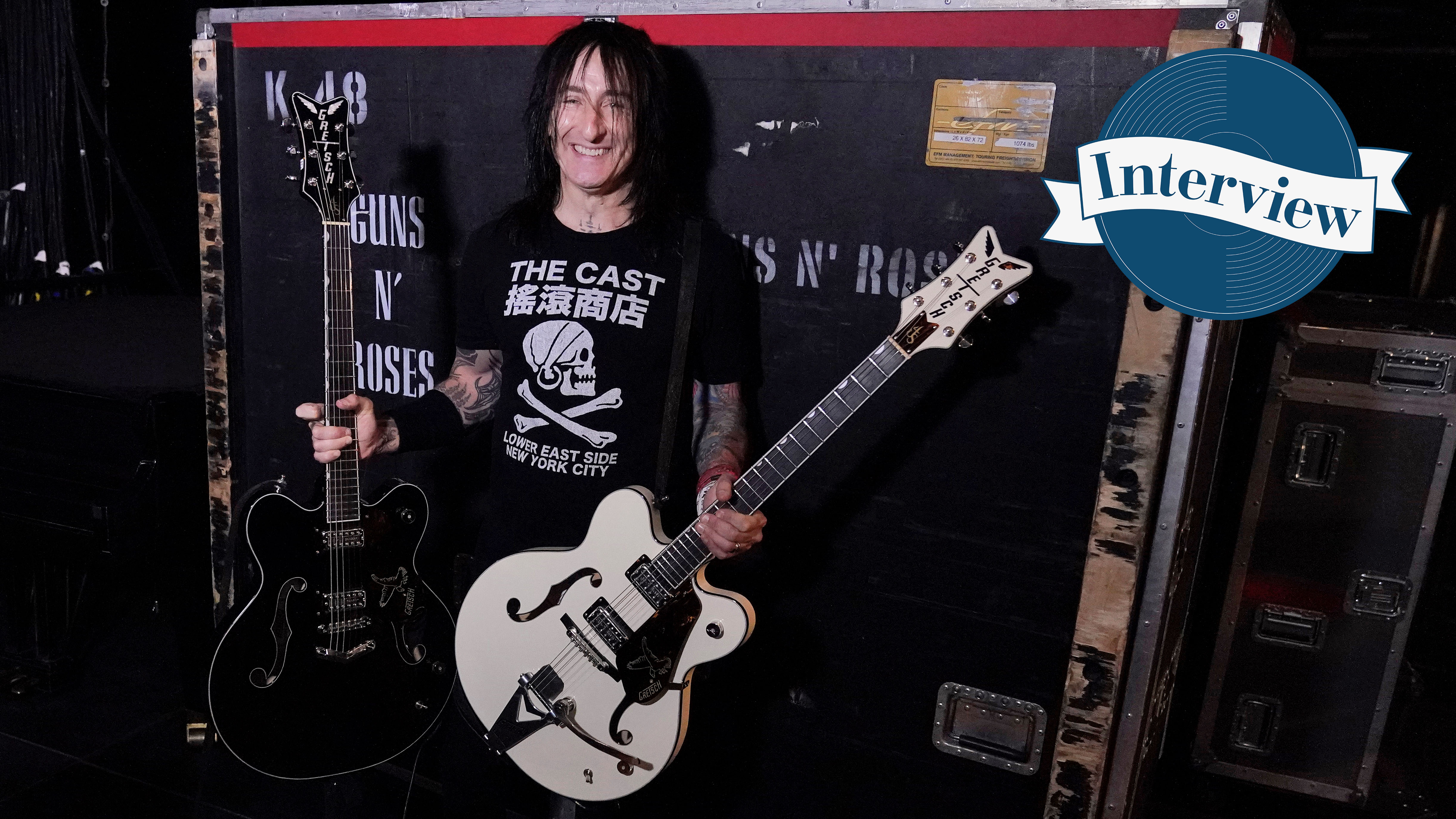
Richard Fortus is currently back in the studio having returned home from Gun N’ Roses’ gargantuan North American tour. As tours go this one was pretty special. Despite the dreaded you-know-what, team GnR survived the rigours of the road with flying colours. As did Fortus’ new Gretsch Falcon signature models – the white, Bigsby vibrato-equipped G6636T-RF and the black, V-stoptail G6636-RF. Now the Guns N’ Roses guitar veteran has finally been able to take them out for their debut spin on the big stage he can safely say, “They performed perfectly.”
These finely-tuned tone machines have been a long time in the making. Under the scrutiny of Fortus’s discerning ear their design has been painstakingly tweaked to perfection. These Falcons aren’t just any signature model electric guitar, or any regular Gretsch guitar for that matter. As GnR’s longest-serving guitarist tells us, there’s a lot more to the Gretsch Richard Fortus Signature Falcons than meets the eye…
The centre block really threw me for a loop – how much that changed the response and dynamics of the guitar and the tone
Was this the first time you were able to fully road test your new Gretsch Falcons?
"Yes. Right before Covid hit I had an earlier prototype that I was able to take out, which was great because I was then able to make some small adjustments. On this last Guns N’ Roses tour, I used four guitars – two with each rig (because we have an A rig and a B rig). They were all completely stock and they worked fantastically. Our front-of-house guy and my tech are super excited about them. They’re dialled in completely.
You had a great deal of input into the design of your signature guitars, perhaps more than most artists…
"Yeah. And Gretsch has been incredible. Being equally as diligent we’ve been able to get the perfect product, you know. And they’ve been very patient with me. [laughs] There’ve been so many revisions. It’s been a long time in the works. I’m really thrilled with how tenacious the Gretsch guys have been. Especially Jason Barnes, Mike Taft, and John Gaudesi.
"John is the guy who wound the pickups. He had a winder in the [Guns N’ Roses] rehearsal room and was winding pickups as we were playing. I love that they offered that – that he actually brought his winder to rehearsals! We had four prototype guitars working in rotation so he could wind and fit the pickups as we were testing them with the band."
Want all the hottest music and gear news, reviews, deals, features and more, direct to your inbox? Sign up here.
Your signature models have a centre block, although you have previously played hollowbody Gretsch Players Edition Falcons…
"The centre block really threw me for a loop – how much that changed the response and dynamics of the guitar and the tone. It was pretty major. The pickups that I had worked on for years with Rob [Timmons] at Arcane for my [hollowbody] Falcons didn’t work at all in this guitar. The Arcanes are perfect in the regular Falcons, and they sound phenomenal, but for the centre block we really had to go back to the drawing board. We started right at the beginning."
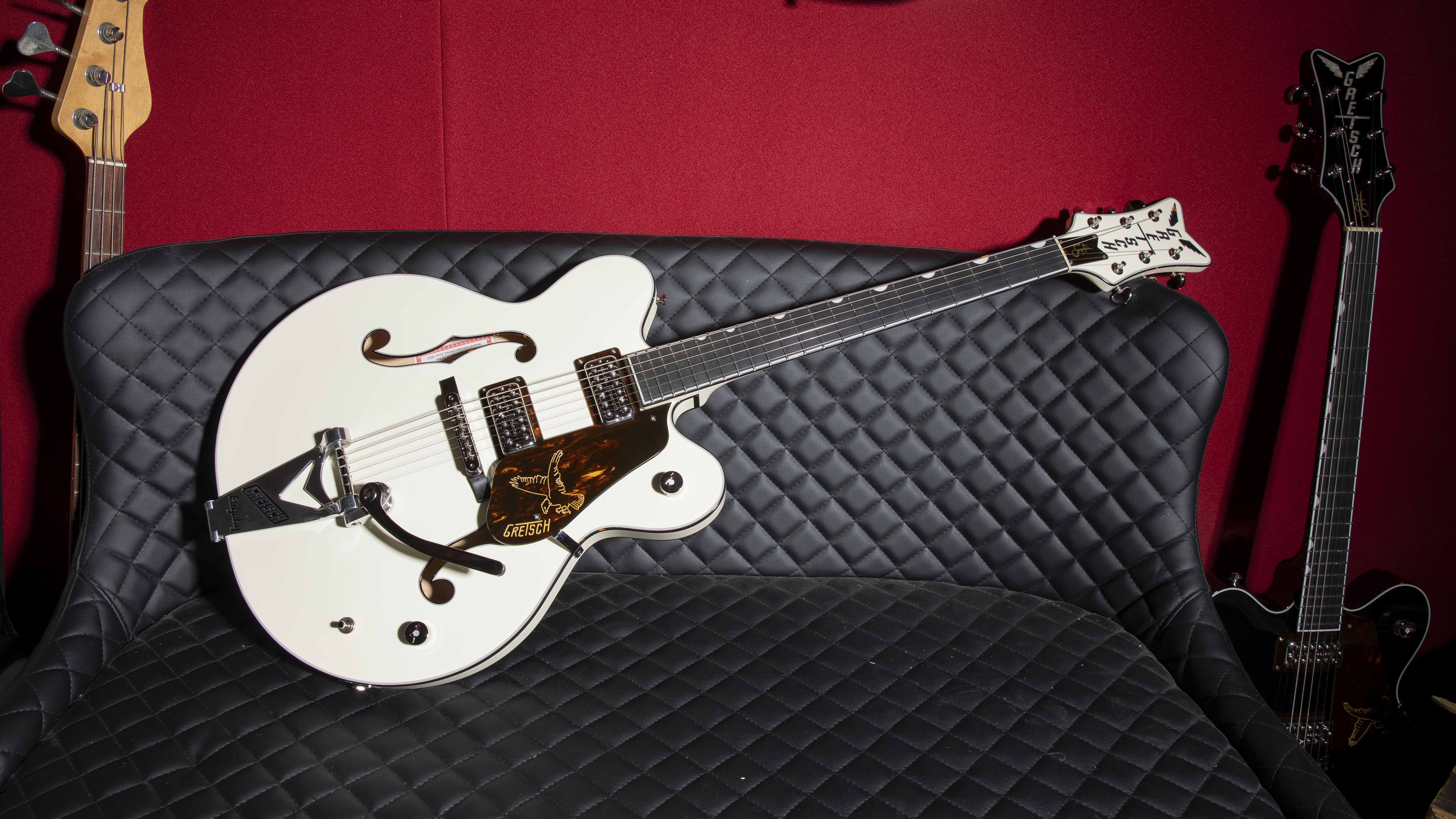
We ended up with a hybrid design of a vintage Gibson PAF humbucker and Gretsch Filter’Tron
How did you perceive the differences in tone?
"I didn’t really anticipate that large of a difference. It was a learning experience for me. The difference between a fully hollow guitar and a semi-hollow is massive with respect to how the pickup interacts. The centre block makes the pickup much darker – you lose a lot of that sparkle. So, to regain that we really had to start again.
"We ended up with a hybrid design of a vintage Gibson PAF humbucker and Gretsch Filter’Tron. A lot of that had to do with the treble bleed capacitor; when you back it down just a touch it opens up and gives you that classic Filter’Tron thing. Between 6 and 8 it just makes everything sparkle that much more and pretty much hits the sound of my hollowbody Falcons with the Arcanes dead on.
"We figured out how to get the Filter’Tron thing in that sweet spot; I know it by feel – when you back it down just a touch it opens up. And then when you turn the volume up all the way it’s much more PAF-like. It sort of smooths out that top end. It rounds things off and pronounces the mids in that vintage PAF way. You still have a lot of articulation though. It’s not like a modern higher output pickup where you might lose definition."
Low output pickups are your thing…
I’m really drawn to lower output pickups because of that bigger sound. And I think with higher output pickups you can lose a lot of your low end and top end. And there just doesn’t seem to be any way around that.
That’s what I love about Gretsches in general. To me, it’s such an essential part of rock ‘n’ roll tonal history. And with my signature Falcons, if you back it down to that Gretsch Filter’Tron kind of tone you get that low and top end thing. You get a bigger low end and a chime-y top end. It’s a sound that really seems to fit around a guitar player who’s using a higher output humbucker.
Isn’t that how you and Slash ‘tesselate’ your sound in Guns N’ Roses?
Exactly. Also, when I’m soloing with [the signature Falcons] I can open it up and it adds that sweetness to the midrange.
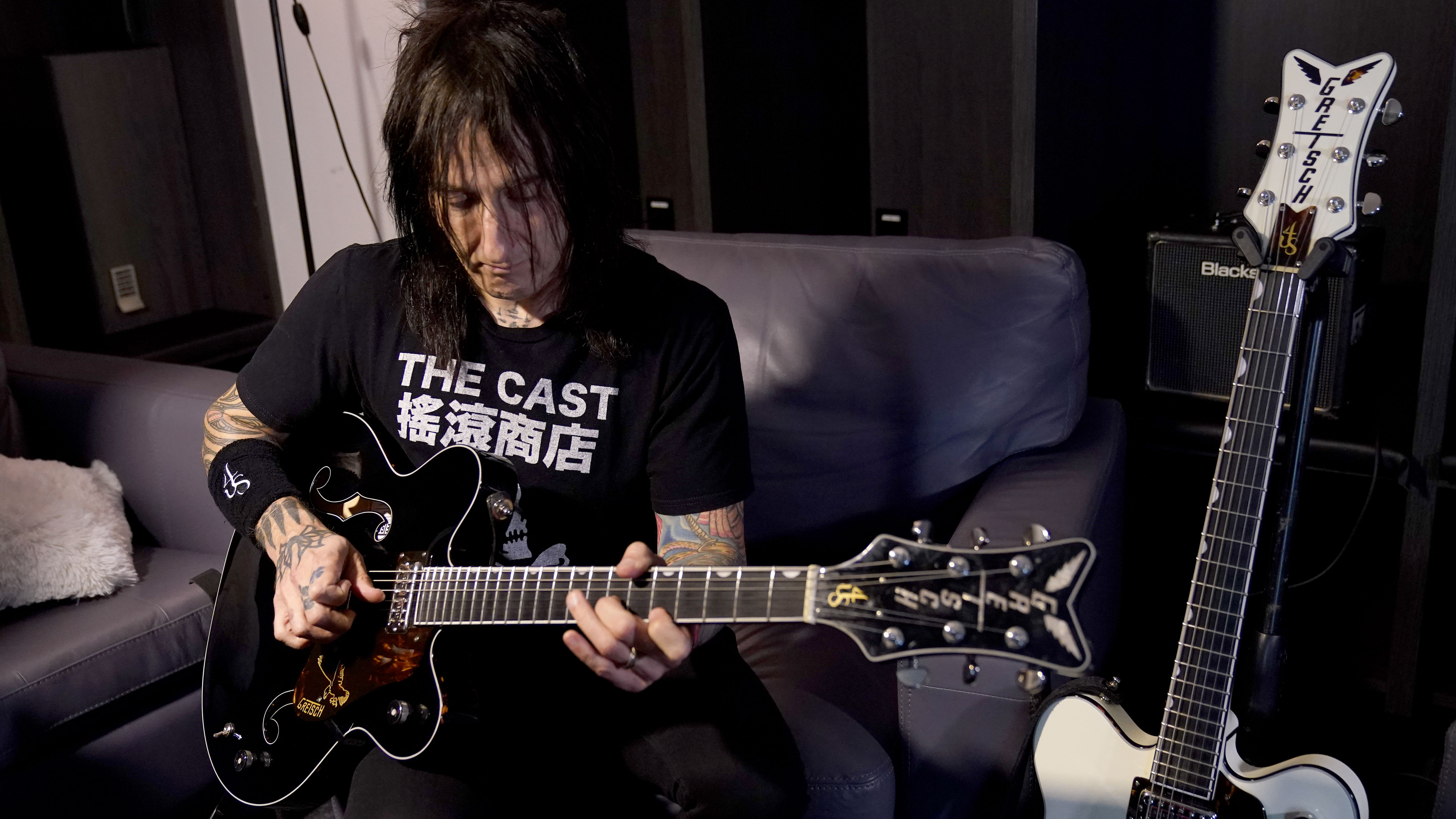
Slash and I are constantly riding the volume
During a Gun N’ Roses show, will you sometimes just whack the guitar volume up rather than hit a gain pedal?
"Oh yeah, Slash and I are constantly riding the volume. I think that’s a bit of a lost art. People have sort of forgotten about that. Whereas in the 70s and 80s, people were much more attuned to that dynamic.
"I think people almost got lazy with channel switching and pedals. But you can lose so much dynamic range. There are so many tones just within the volume knob of this guitar – from the sparkly clean sound to the overdriven Gretsch Filter’Tron sound to the wide open PAF sound."
How does the guitar’s volume interact with pedals?
"There are so many tones working with the volume and an overdrive pedal. And if you’re using a fuzz, the interaction with your volume knob produces an infinite number of tones that can be massively different. If you’re using a Fuzz Face or Tone Bender-style fuzz, when you back it down it cleans up and gives you that really nice sparkle on top."
What kind of pots are in your signature Falcons?
"I was insistent that we use an audio taper as opposed to a linear taper. I didn’t realise how many modern guitars use linear taper pots. I found that pretty shocking."
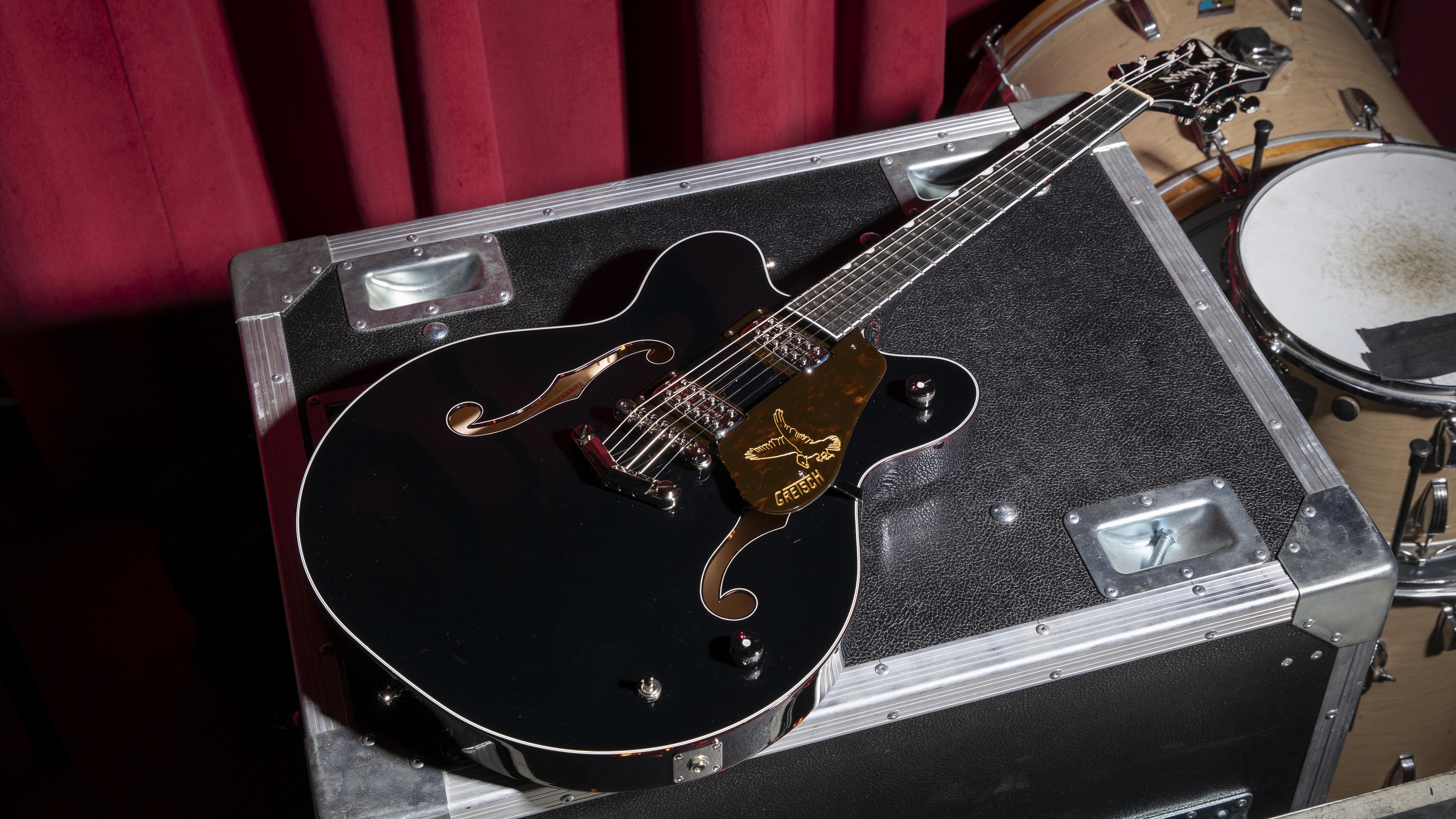

The Cult's Billy Duffy: "Do you really want to go to your grave having never owned a Gretsch? It should be on the bucket list!"
You’ve played Gretsches for a long time, including some vintage Chet Atkins models from 1958…
"Yeah. My favourite sounding one is the 6120 [Chet Atkins Hollow Body]. There’s just something about it. That one stays in my control room. I don’t think it’s as aesthetically pleasing to me as the other two (which I’ve now sold) – the 6119 [Chet Atkins Tennessean] and 6122 [Chet Atkins Country Gentleman] – but it sounds better."
Have you bought any other vintage Gretsches recently?
"I bought a ’57 Duo Jet. It’s black, the same as George Harrison’s. I found it and just fell in love with it. It’s got a Bigsby and has Dynasonics. I’m digging those pickups. I also have the Gretsch [G6120TB-DE] Duane Eddy 6-String Bass and I had Lindy Fralin wind me a set of Dynasonics for that."
What is it about the original Gretsch White Falcon you like?
"I always thought they were pretty phenomenal looking. You know, Billy Duffy, Neil Young and Stephen Stills had them, and I always thought they looked incredible. But I always found the gold to be a bit much."
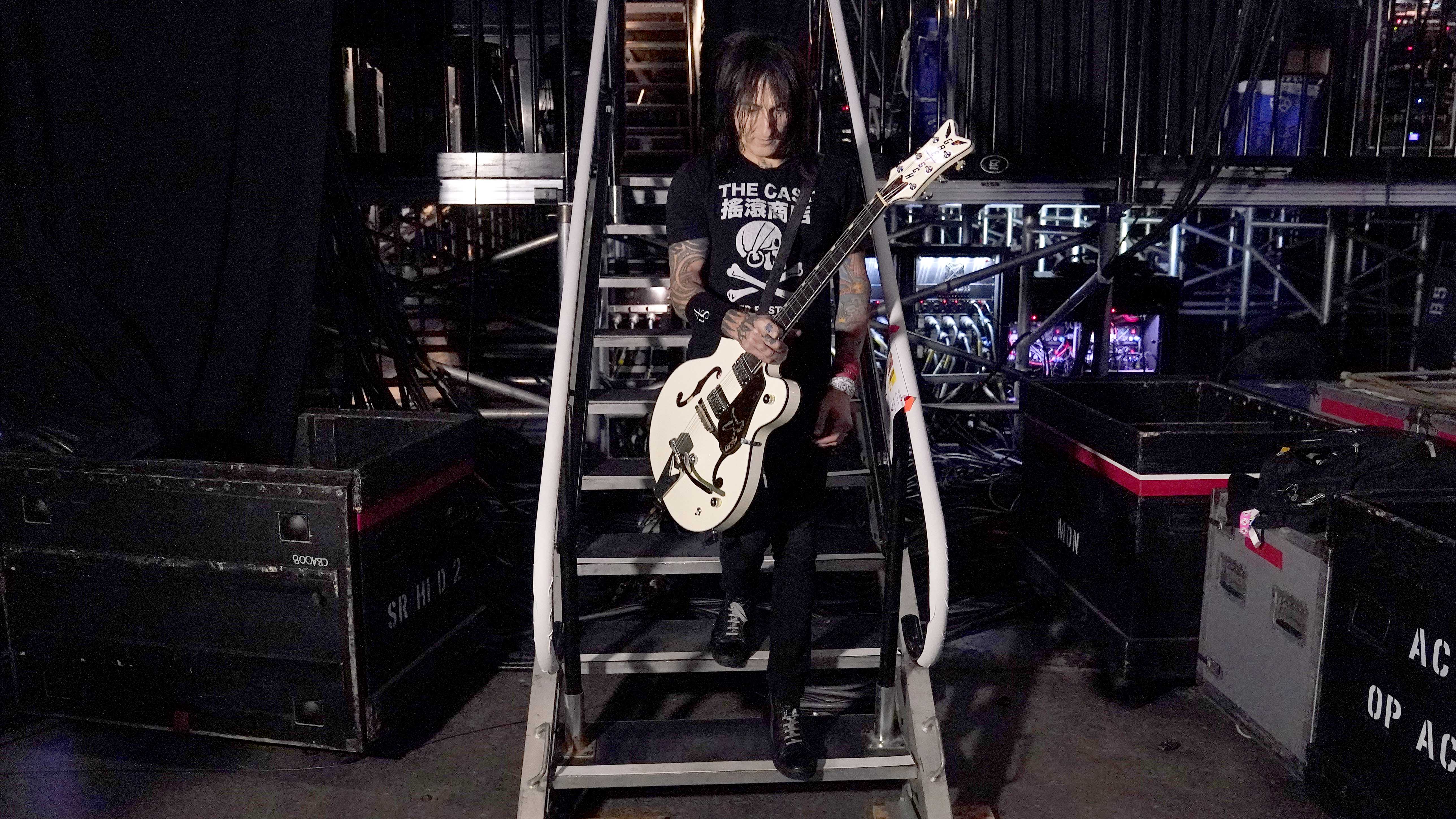
Your signature Falcons comprise two distinct models; what are the main differences?
"The Vintage White [G6636T-RF] has a B6 Bigsby, whereas the Black [G6636-RF] has a stoptail. We originally tried a B7 Bigsby on the early prototypes and it just wasn’t working for me. To accommodate the B6 we had to change the neck angle (again, Gretsch was awesome in facilitating that) and it’s perfect now.
"Whereas the white one has a 25.5 inches scale, the black one with the stoptail is 24.6 inches. So, basically, I use the white one when I really want a bit more snap (because of the longer scale). I use the black one when I want more of a Gibson type of feel because of the shorter scale and the stoptail. When I want to play more intricate faster stuff, I’ll use that, but otherwise I stick to the white one because of the intonation and snap – and I do love a Bigsby!"
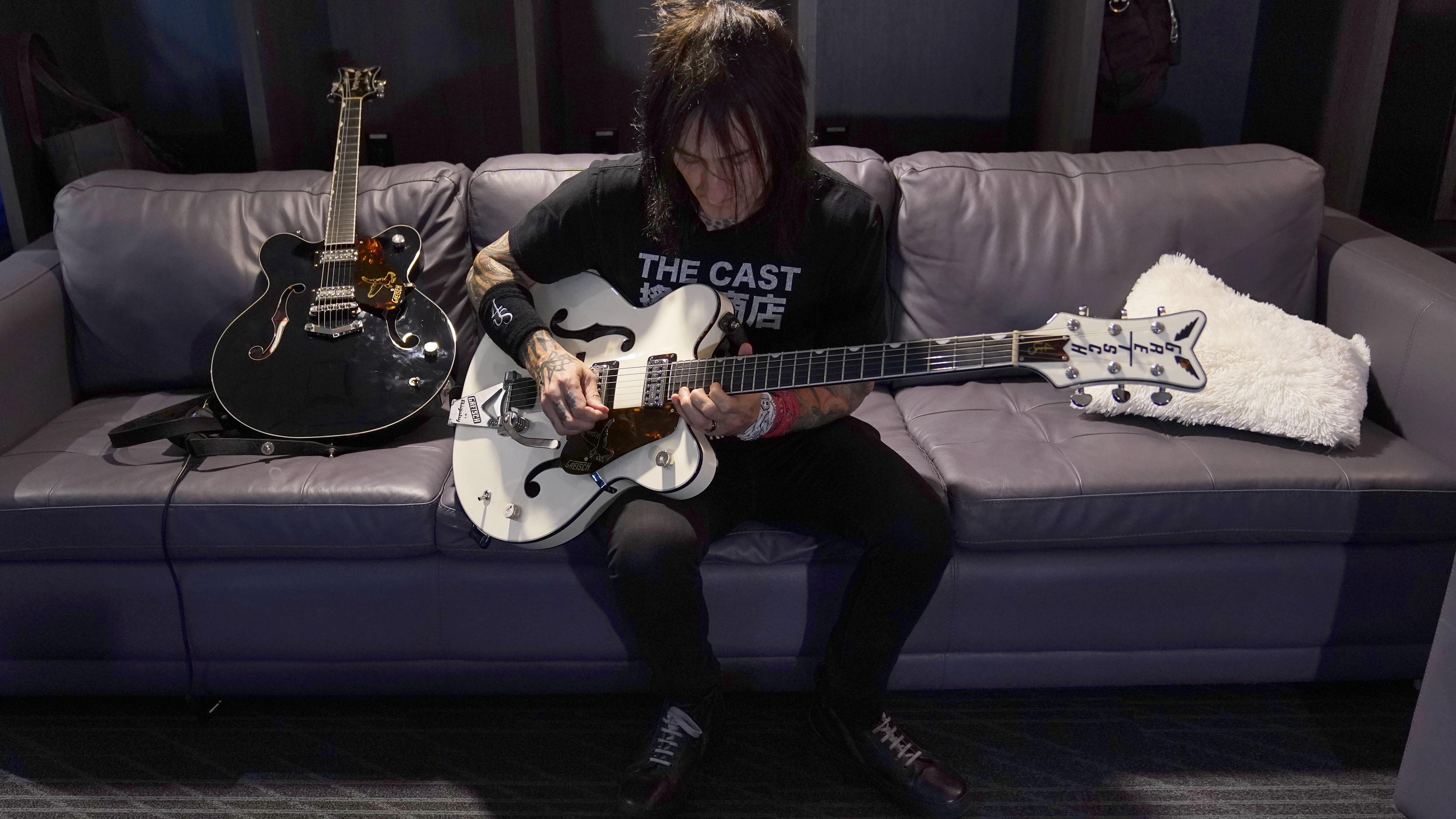
I think that’s the only modern guitar I’ve used on a recording with Guns!
We love the colour choices. Did you consider any other finishes?
"My friend Leo Scala [of Scala Guitars] took an early prototype, sanded it down, and finished it in red – like a Cardinal Red. It looks really cool. Maybe the next one we do will be red."
Your Falcons have now proven themselves on the stage, but have you managed to put them to good use with Guns N’ Roses in the studio?
"I used one of the prototypes when recorded the new Guns N’ Roses songs. I think that’s the only modern guitar I’ve used on a recording with Guns! It’s just such a unique sound."

The Gretsch G6636T-RF Richard Fortus Signature Falcon Center Block with String-Thru Bigsby and the G6636-RF Richard Fortus Signature Falcon Center Block with V-Stoptail are out now. More info at gretschguitars.com
Rod Brakes is a music journalist with an expertise in guitars. Having spent many years at the coalface as a guitar dealer and tech, Rod's more recent work as a writer covering artists, industry pros and gear includes contributions for leading publications and websites such as Guitarist, Total Guitar, Guitar World, Guitar Player and MusicRadar in addition to specialist music books, blogs and social media. He is also a lifelong musician.

